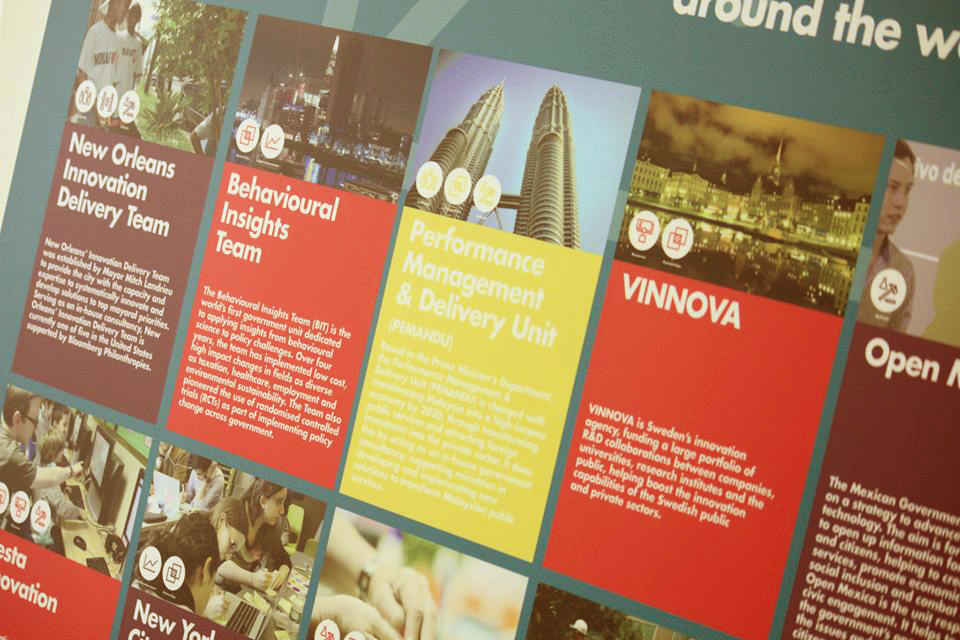Innovation is an essential part of building better societies, writes Eeva Haaramo. The new “i-teams” report highlights innovation teams that are transforming governments, including the Finnish Innovation Fund Sitra.
Innovation is not often the first word that comes to mind when talking about government. However, in an age of having to serve more diverse demands under growing fiscal pressures, governments are waking up to the need to create innovative solutions for their most pressing problems.
“Governments have been behind some of the greatest innovations of all time, like the internet, space flights and universal healthcare. There is fantastic systematic innovation driven by the public sector. Having said that, governments are also very stable and often hard to change,” says Peter Baeck, principal researcher at Nesta, the UK’s innovation agency, and one of the authors of the new report “i-teams: The teams and funds making innovation happen in governments around the world”.
“What we have seen in the last 5 to 10 years is an increasing trend in governments setting up their own innovation teams rather than going to outside consultants,” says Baeck. “They want to build teams with dedicated skills to help government organisations to identify social issues and challenges and come up with new ideas and solutions for these issues.”
It is exactly these government innovation teams, units and funds working at national, regional and city level, or “i-teams” as Nesta calls them, that are the focus of the new report. The report, produced by Nesta and Bloomberg Philanthropies, highlights 20 leading innovation teams from six continents helping to transform governments around the world and the lessons that can be learned from them.
All governments need dedicated innovation teams
One of the main findings of the year-long research is that all governments need institutions to catalyse innovation and should set up dedicated teams to structure and embed innovation methods and practice in government. According to Nesta, innovation requires dedicated capacity, specific skills, methods, partnerships and consistent political support.
“One of the things we often see in public innovation is that we are becoming incredibly good at creating pilots and prototypes and stuff on a small scale but they rarely scale and become part of the mainstream system,” says Baeck.
“One of the features of all these i-teams [in the report] is the way they connect with political and public service leadership either by being based in central government or having an ownership structure or government structure that is closely aligned with political policies. If you don’t build strong relationships from the start, the risk is you won’t be heard when decisions are made.”
Among the organisations presented in the report is the Finnish Innovation Fund Sitra. Established in 1967, Sitra is one the oldest innovation teams in the world – the majority have been established during the past 15 years. But it is not only the history of Sitra that interests Nesta.
“What is interesting about Sitra is how they represent this trend of where you invent or create a team to solve a challenge in society and once the team solves this challenge it becomes obsolete. You don’t need Sitra when it serves its purpose,” according to Baeck.
“What Sitra has done really well is to reinvent itself to understand and address the emerging needs and demands in Finnish society. This makes them a really interesting case study because we can look at Sitra’s lifespan for over 47 years.”
Sitra uses its public funding and resources for innovation programmes that incorporate both research and practical experiments in a range of sectors, as well as for investments in early- stage companies
From fixing street bumps to saving energy, innovation teams provide solutions
These i-teams tackle a wide range of issues. In the report their activities are divided into four different but often overlapping categories: finding solutions to specific challenges; promoting citizen, business and charity engagement to find new ideas; transforming government skills, culture and processes; and achieving wider policy and systems change.
But it is often the practical examples of the work and impact of the i-teams that people want to hear about.
“In Boston, the New Urban Mechanics unit did something called Streep Bump. It’s an app you can install on your iPhone and when you drive to work every time you hit a bump in the road your phone registers it and sends the data to the City. What the City gets is a crowdsourced map of bad roads in the city which helps it to plan road maintenance.”
Another example Baeck draws attention to is the latest addition to Singapore’s public services, Post ‘n’ Poll. This is an app where public officers can take pictures to report issues or suggest ideas which are then added to the wider system of staff suggestions.
The system has had great results. According to the report, it is estimated that in 1999 alone public officers used the system to contribute to more than 520,000 ideas, of which approximately 60 per cent were implemented, leading to savings of around 19 million euros. It has helped to break the barriers of idea generation created earlier by hierarchy.
Nesta’s Peter Baeck believes it is a simple way to make use of everyone who works in public services: “What they see and experience every day becomes a valuable resource of knowledge for the public service to utilise.”
In Finland, Sitra’s work in sustainable energy and energy efficiency is estimated to have saved the country approximately 1.2 billion euros.
“The public sector tends to avoid risks and companies tend to invest in short-term initiatives. Sitra aims to serve as the risk-taker for the public and private sectors to show that change can happen and it can be very positive,” says Mikko Kosonen, Sitra’s president.
Risk- taking and measuring impact are also included in the 10 lessons identified in the report designed to help city and national governments to establish their own i-teams. Measurable results are important for attracting further investment and in scaling projects but also in ending the ones that do not work.
“We don’t live in the belief that you just read the report and then you go and do it. Hopefully there are examples in there for teams, people and leaders of public services on how to begin this kind of work and hopefully that inspires a bigger change process,” Baeck concludes.
Innovation doesn’t need to start from scratch.
|
10 lessons for building i-teams by Nesta
|
Text by: Eeva Haaramo



Recommended